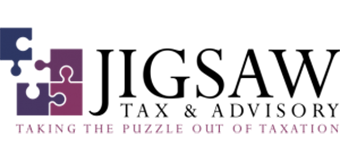As technology develops there are more and more apps on the market and our tech savvy clients are looking to integrate this technology into their business lives. The information is over whelming and we advisors need a way to stay on top of this and identify the best apps for our client
At Jigsaw it has always been our intention to make your business life better through knowledge and technology. I have spent a lot of time on the knowledge side of things, but it is now time to start with the technology. There are countless options out there but where do we start?
Advising our clients that they should have a stack of 5 different applications to have a well functioning business, and then leaving them to navigate their way through is not going to help anyone. There needs to be a tailored, systematic approach so that the products work in the way they were designed, and work for your specific business needs. We want you to be on the cloud, we want you to use apps in your business but we want you to do it strategically.
Let’s get back to the very basics. Why the cloud? What is the cloud? When travelling on an airplane do you look down into the clouds and wonder if you are going to see a whole bunch of files flying around there? Ok, maybe not – but I can’t help think about cloud computing whenever I am in a plane. The definition of the cloud according to Microsoft (and they should know) is :
“a term used to describe a global network of servers, each with a unique function. The cloud is not a physical entity, but instead a vast network of remote servers around the globe which are linked together and meant to operate as a singe ecosystem.”
What this means to me is connectivity. Let me explain from my own experience at Jigsaw Tax. When we started Jigsaw Tax we had one office in Goulburn. In that office we had 3 people working and their computers were each connected to a server. Our server was a big computer that was in a locked cage because that is where all of the important data was stored. Each night we would run a back up of the server and each night I would take the previous day’s back up home with me so we had a second source of data in the event the building burnt down. If you are a Millennial this will seem like a history lesson, but there was a time before the cloud and there are still a lot of businesses that operate from a local server.
If I wanted to work from home, I used a system where I would dial in over the internet and “capture” my computer. I would then use a second computer (at home) to do work on my office computer and access the server and the data that way. When we expanded our staff base into a second location we had to set up 2 computers for each staff member – one attached the server at head office and the other at the staff member’s location. It was clunky, expensive and inefficent.
We quickly saw that to expand our operations effectively we had to find a new solution. Our journey moving to a fully online, cloud accounting firm began. Today all of our staff have at least 2 monitors on their desks (but only one computer). We minimise our use of paper which is good for the environment. We store all of our documents very securely on cloud platforms which means they are accessible and not taking up value office space. We use Xero as our accounting and tax software, and as this is cloud based it means we can access our data anywhere, anytime – for our laptops, tablets or phones. We can have staff working for us anywhere.
Our cloud journey is not all about Xero, although we truly love Xero. We have worked with a mixture of applications (apps) that give us greater functionality. Some of our attempts have worked, others have not, and it is important to recognise that what might work for one business may not be the best solution for your business. Or it may be that a better product has launched that serves your needs well. As an example, we started using a system called Docusign to get electronic signatures from our clients. We have now changed to a new program called How Now, which does the same thing, but also allows us to store client documents on a portal just for them. When we made the decision to go with Docusign, How Now did not exist. Docusign is still a great product but we have found an alternative that serves our needs better. With any app we integrate we research, do a cost benefit analysis and make an informed decision before we make any changes.
The beauty of Xero is that was is built with the vision that it would integrate with apps. Xero’s founder Rod Drury recognised that Xero could not be everything to every business, so the platform was built so that it could be adapted by adding on functionality through 3rd party apps. It is this vision that has set Xero apart from it’s competitors. It is priced for small business but has immense power if used effectively.
Many of these apps also integrate with other software providers but our focus will be on Xero. Xero has over 700 apps that connect to it. We will be exploring some of the relevant apps and helping to guide you in your journey.
Think about your business. Are you still doing things the old way? Is there a possibility that you can be doing things better? How much time is it costing you to not doing things as efficiently as you can be?


